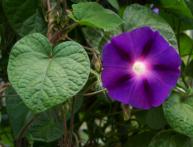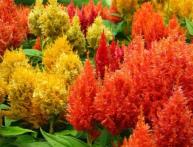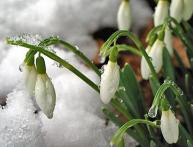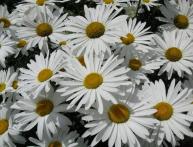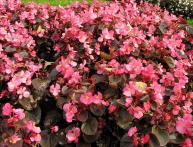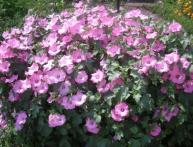Annual dahlias: proper planting and care
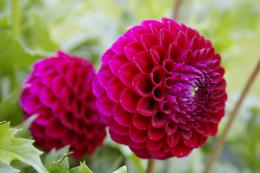
One of the gorgeous autumn flowers of the Asteraceae family are dahlias. They can be seen in almost any area of a country house, thanks to the varied colors of the inflorescences. Grow annuals dahlias It’s not difficult, the main thing is to follow all the rules and recommendations.
Content:
Description and varieties of plants
Dahlias belong to the Asteraceae family. These flowers do not tolerate frost, so they are grown as annuals. Dahlias have basket-shaped inflorescences. In the central part of the inflorescence there are tubular flowers with a pistil and stamen, in which capsules with seeds are formed. Depending on the variety, dahlias can be tall or short. The inflorescences can be double, semi-double, feather-shaped, collar-shaped, etc. Their diameter is about 10 cm.
Popular varieties of annual dahlias include:
- Variety "Jolly Guys". This is a dwarf variety and is grown primarily to decorate flower beds. The height of the bushes does not exceed 70 cm. Flowers can be white, pink, red, lilac and other shades.
- Variety "Piccollo". The plant reaches a height of 50 cm. It is grown in flowerpots and pots. Can plant in small flower beds.
- Variety "Dandy". This variety is distinguished by original brightly colored flowers. The diameter of the inflorescences reaches 6-8 cm.
- Variety "Minion". The height of the plant is 40-50 cm. It is used to decorate flower beds and balconies.
- Variety "Figaro".The height of the plant does not exceed 30 cm. The inflorescences are double or semi-double, of various bright shades.
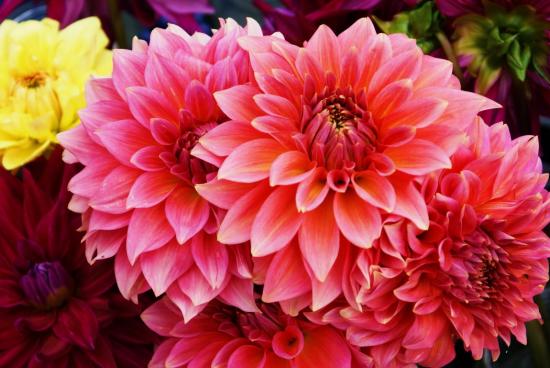
You can plant different varieties of dahlias in your summer cottage or in the flower beds of a country house. These flowers always attract attention with their bright, beautiful colors.
How to plant dahlias correctly
There are two ways to grow dahlias: through seedlings and seeds. When grown through seedlings, flowering can be expected in June. For planting mixture it is better to use peat, sand, perlite. It is important to make sure to make drainage holes in the containers. Before planting, you can soak the seeds overnight in warm water with the addition of aloe juice in a 2:1 ratio.
Sow seeds in pre-prepared boxes, then sprinkle with soil on top and spray with a spray bottle. The first shoots will appear a week after sowing the seeds.
It is not recommended to remove the shelter immediately. This needs to be done gradually. After the seedlings have grown, you can carry out picking. When transplanting seedlings, you need to deepen the plants to the lower leaves. After some time, you can apply complex fertilizer. Seedlings are planted in open ground in May. It is recommended to cover the seedlings with any covering material, then you don’t have to worry about the survival rate of the plants.
The planting location should be sunny. It is recommended to plant on neutral or slightly acidic soil. The soil needs to be mixed with humus and a little sand added to it. The soil needs to be hardened before planting seedlings. To do this, in sunny weather, you should take the pot with seedlings outside first for 5 minutes, then gradually increase the time.
Video about planting annual dahlia seeds:
It is recommended to water the seedlings 2 hours before planting in open ground.Next, make holes, add compost and ash, mix the fertilizer and plant the seedlings. Low-growing varieties are planted at a distance of 20-30 cm from each other, medium-growing varieties - 50 cm, and tall varieties - 60-70 cm. After planting, water the seedlings and mulch the soil around the plant.
If the seeds are sown in open ground, flowering can only be expected by August. It is advisable to carry out this manipulation after spring frosts.
Care instructions
Dahlia is a heat-loving, drought-resistant crop. The flower should be watered moderately, as it does not like excess moisture. in the soil. In open ground it should be watered once a week, in rainy weather even less often. If the summer is hot, then moisten the soil more often only in the morning or evening. Dahlias, like other flowers, need feeding. You can alternate organic and mineral fertilizers every 2 weeks.
During flowering, you should definitely apply potassium or phosphorus fertilizer: for 8 bushes you will need 30 g of fertilizer per 10 liters of water. A mandatory condition when caring for dahlias is weeding the plants. Weeds should be removed in a timely manner, the soil should be loosened, and flowers should be hilled up. All these measures contribute to better air flow, maintain humidity, and also prevent the development of diseases.
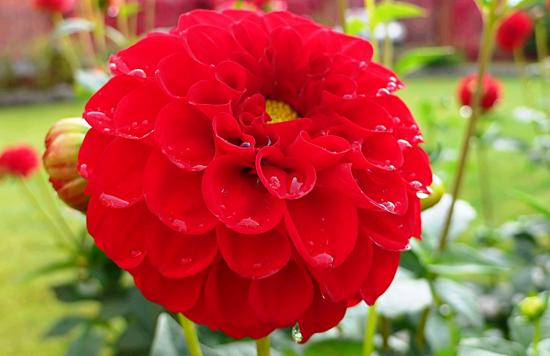
In order for the dahlia to bloom longer, it is necessary to promptly trim off the faded inflorescences. With the onset of the first frost, it is recommended to cover the plants with film. This way you can extend flowering by 2-3 weeks. During the growth period of the plant, lower lateral shoots should be removed. Before the formation of buds, pinching is carried out.
After the dahlia has bloomed, you can collect the seeds. To do this, carefully cut off the seed capsule from dried and faded plants.When ripe, the achene will become dark beige in color and shaped like a cone. Next, carefully open the ripened seeds, dry them and pack them in paper bags. They should be stored in a cool, dry place.
From diseases Dahlias are most often susceptible to viral mosaic and ring spot. All affected plants should be removed and the soil treated with an insecticidal solution. In the fall, you should remove the bushes and prepare the soil for planting dahlias next year. Compost and humus should be added to the soil in equal quantities. If you properly care for your plants, dahlias will delight you with their bright flowers for a long time.

